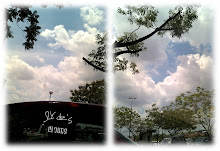Candy 101
From Wikipedia, the free encyclopedia
Candy, specifically sugar candy, is a confection made from a concentrated solution of sugar in water, to which flavorings and colorants are added. Candies come in numerous colors and varieties and have a long history in popular culture.
The word "candy" comes from Arabic qandi, derived from Persian qand, meaning "sugar."[1] In North America, candy is a broad category that includes candy bars, chocolates, licorice, sour candies, salty candies, tart candies, hard candies, taffies, gumdrops, marshmallows, and more. Vegetables, fruit or nuts glazed and coated with sugar are called candied.
HISTORY
We all love candy. But if I asked you who first created candy you probably wouldn't know, right? Chances are not. Believe it or not, cavemen were the first to create candy. They took hives of honey and dried them out to make a taffy-like candy. From then on it was passed from generation to generation. Below is a timeline of events that helped shape candy to be what it is today.
Manufacture
Candy is made by dissolving sugar in water or milk to form a syrup, which is boiled until it reaches the desired concentration or starts to caramelize. The type of candy depends on the ingredients and how long the mixture is boiled. Candy comes in an endless variety of textures from soft and chewy to hard and brittle.
Sugar stages
The final texture of candy depends on the sugar concentration. As the syrup is heated, it boils, water evaporates, the sugar concentration increases, and the boiling point rises. A given temperature corresponds to a particular sugar concentration. In general, higher temperatures and greater sugar concentrations result in hard, brittle candies, and lower temperatures result in softer candies. These "stages" of sugar cooking are:[3]
| Stage | Temperature in °F | Temperature in °C | Sugar concentration |
|---|---|---|---|
| thread | 230-233°F | 110-111°C | 80% |
| soft ball (e.g., fudge) | 234-240°F | 112-115°C | 85% |
| firm ball | 244-248°F | 118-120°C | 87% |
| hard ball | 250-266°F | 121-130°C | 92% |
| soft crack | 270-290°F | 132-143°C | 95% |
| hard crack (e.g., toffee) | 295-310°F | 146-154°C | 99% |
| clear liquid | 320°F | 160°C | 100% |
| brown liquid (caramel) | 338°F | 170°C | 100% |
| burnt sugar | 350°F | 177°C | 100% |
courtesy of
www.wikipedia.com
and
Continental candy






0 sprinkles:
Post a Comment